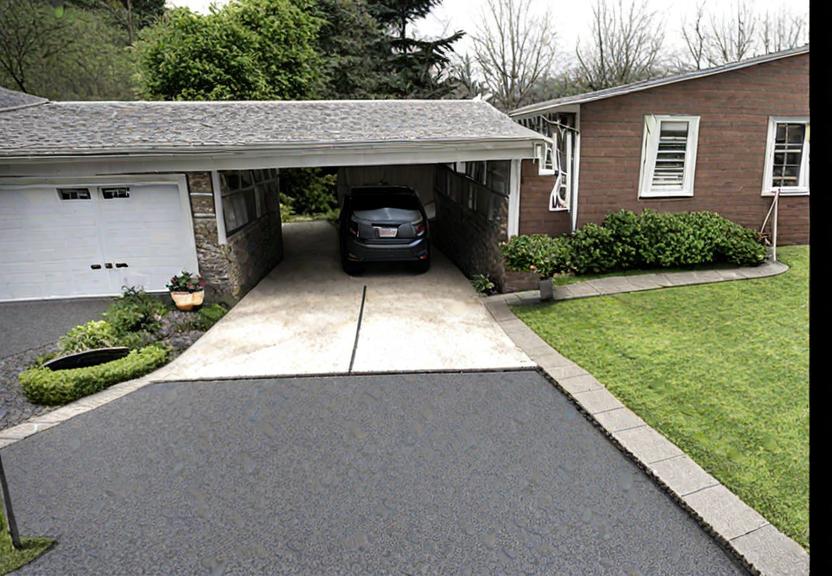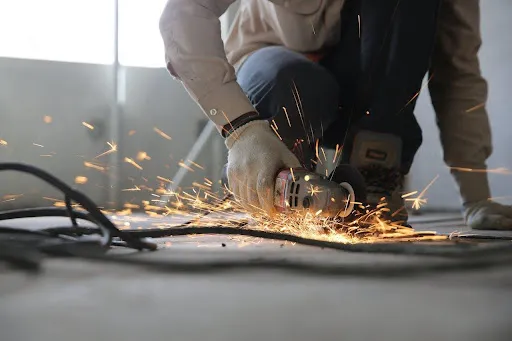Following the high-profile failures of bitcoin cash and bitcoin gold, a new cryptocurrency called Solana has entered the fray—though it’s not drawing from their mistakes. Solana’s founders believe those projects failed because they didn’t work to address the fundamental flaws of their respective blockchains. Their goals for Solana are to make it scale in a way that complements existing blockchain infrastructure and achieve this through improvements to its consensus protocol.
This system is based on an earlier project called Min-Sol/Tromp (short for minimum-weighted synchronous history) developed by founder Adrian Brink with assistance from Terence Eden. But what makes Solana different from these other attempts is its consensus approach.
With proof of work (PoW), system resources like processor time and electricity are used up in mining blocks to secure the network while competing miners race against each other to solve complex mathematical puzzles. Or it hashes until one solves a hash that gives that miner the right to add another block in the blockchain.
With proof of stake (PoS), no miners are racing each other as a group. Instead, there is usually just one entity or node doing all the work, which requires a large investment to have any chance at getting a reward (which can be more expensive than what it takes to mine with PoW). In contrast, Solana uses an approval voting method for its blocks; rather than compete, nodes vote on which transactions should be added next based on their stake in coins already in that blockchain.
Though approval voting has been around since 1962, it is relatively new when compared with more established consensus methods like PoS and PoW but still has room for growth if Solana proves successful. Approval voting could potentially go toe-to-toe with PoW as well as remain competitive with PoS while being easier because it doesn’t require special kinds of hardware or having significant investments made ahead of time.
If you’ve been wondering what SOL is, what it stands for, how to go about buying it, or have other questions related to this particular cryptocurrency, we’ve set up a few resources to answer your questions. Read on to find some answers.
Table of Contents
Solana Design Principles
The Solana platform was designed with a set of smart contract-based design principles in mind. We have organized the most relevant ones below.
Solana’s Proof of History (PoH) technology is based on a proof-of-work consensus algorithm called PoW2, which allows for efficient and secure verification of information stored on the blockchain.
The incentive to participate in this proof system comes from Solana’s Proof of Stake (PoS) consensus algorithm, where nodes are incentivized to maintain a copy of the blockchain history. They do this by making micro staking bets that conform to the current state-mandated by the chain ruleset, which grows their balance if they guess correctly and shrinks their balance if they guess incorrectly—all while earning rewards for handling transactions.
This architecture results in an ecosystem where everyone has complete visibility into all transactions since block 0, but only stakeholders can modify historical blocks or stake new blocks to earn rewards for doing so.
Sealevel is a set of protocols that makes this functionality possible without requiring every node to hold a full copy of the entire chain history or run complex computations on incoming blocks.
The turbine is another protocol that helps keep every node synchronized with each other as soon as there are any changes to their network so that no one gets left out even after prolonged periods without an internet connection. Taken together, these protocols make up what we refer to as Solana’s Byzantine Fault Tolerant architecture.
SOLANA
In this article, we’ll take a deep dive into the Solana blockchain and its native token. We’ll examine why it was created, how it differs from other blockchains like Ethereum, and what the context around its development is.
- The Solana blockchain was built by a team at Stanford University’s Data Science Institute to solve the scalability issues inherent in existing consensus algorithms. With fees swelling and transactions backlogging on Ethereum-based platforms, the time seemed ripe to build a new infrastructure from scratch with better throughput and concurrency.
- Solana’s goal is to create an ecosystem of interconnected applications that can be accessed via any internet-enabled device. Because it’s based on proof-of-stake consensus (instead of proof-of-work), anyone who holds SOL tokens can be a validator on the network as well as an application user, which makes aligning incentives easy for app developers.
- A unique feature of the Solana protocol is that it allows most transactions to occur off-chain—only finalizing changes when necessary. If a smart contract needs to change something about another contract or make another contract aware of its existence (for example, if one smart contract wants reliable access to data from another), then those changes will be applied directly via on-chain updates between those two contracts only at certain points in time.
SOL Supply
SOLANA is a blockchain platform that provides fast, safe transactions. SOLANA aims to be the first cryptocurrency designed specifically for smart contract operations.
What makes SOLANA different from other blockchains?
SOLANA utilizes Proof-of-Stake (PoS), which has been proven to be a far more energy-efficient way of achieving consensus than the “work” or “proof-of-work” model utilized by Bitcoin and Ethereum. It promises faster transaction speeds, as well as better scalability than existing blockchains. Many people think that it could even replace existing blockchains in some use cases, though this remains to be seen.
The most important thing to understand about PoS and SOLANA is that power over the network is distributed more evenly among users while keeping them relatively anonymous and secure.
The amount of coins you hold dictates how much influence you have when staking—the process whereby your node will verify transactions for an outcome reward—and forging, which allows you to create blocks on the blockchain by solving cryptographic puzzles meant to prove computational work.
That process is what makes blockchains fundamentally tamper-proof because of how much computing power it requires to do so successfully: they must change every single block being validated at once for a hacker to get away with anything nefarious. It would be extremely difficult and easily detectable thanks to their inevitable computing footprints left behind in such an attack attempt—not exactly conducive to making money discreetly on the black market as one might expect after hearing about blockchain technology!
SOL Rewards Distribution
To determine how many SOL tokens a validator receives, the following formula is used:
Number of SOL received = (Total number of tokens created * Total amount of ETH staked by validators) / (sum of total ETH staked by all validators).
What this means is that a validator gets more SOL tokens when fewer people are stalking their ETH. Also, the more ETH a validator stakes, the more SOL he or she will receive. The reason for this is to incentivize participation in the network.
The larger speakers give it credibility and help boost the price of SOL so that everyone benefits from its success. To participate in validation, however, you must be an accredited investor according to US SEC laws as defined by Rule 501b and Rule 202(a)(11) under Regulation D offerings or equivalent laws in other countries.
These distribution systems use the decentralized ethic of cryptocurrency in a very apt manner, making this particular aspect a good reason for why one should buy SOL, or even participate in mining and validating transactions on its blockchain. Each of these activities is extremely rewarding.
SOLANA’s 7 Pillars of Blockchain Scalability
- A Scalable Blockchain:
- #1 Real-time Confirmation Throughput
- #2 Subchains Throughput
- #3 Biased Randomness for Equitable Block Distribution
- #4 State Channels Throughput
- #5 Sharding Throughput
- #6 Static Data Storage Throughput
- #7 Proof of Stake Throughput
A Quick Recap
SOLANA is a brand new digital currency with an ambitious mission: to be the most efficient, secure, and inexpensive cryptocurrency in the world. To achieve this goal, SOLANA employs proofing: Proof of Stake (POS) and Proof of Activity (POW) mining.
This cryptocurrency has been in development for over a year now, with the team releasing regular updates on its blog and elsewhere on social media. The team also has plans to make SOLANA more accessible as it becomes more popular so that it can reach mass adoption by people around the globe.
Given how much money people are investing into cryptocurrencies today, they’re starting to realize just how important it is that these currencies remain secure and stable. Security breaches at major Bitcoin exchanges like Mt. Gox have become commonplace, which many are citing as one reason why Bitcoin prices have been dropping consistently over the last several months.
By comparison, SOLANA employs cutting-edge technology that helps ensure that transactions will proceed smoothly without any serious problems caused by security breaches from outside sources or even internal bugs like those that have plagued other currencies like Bitfinex’s EOS token.
With this hybrid POS/POW system and other innovative features like Zerocoin Protocol integration, SOLANA users can rest assured knowing that their money will be safe from harm in the long run—especially if their coins are staked since there’s no way for hackers to access those coins without spending huge amounts of time trying to break through heavy encryption via brute force attacks or guessing passwords.
Conclusion
Now that you’ve learned some of the key aspects of Solana, you can embark on your journey into its blockchain. Whether you take up a role coding the blockchain itself, invest in the currency (which means you might need to look up how to buy SOL), or participate as a node, mining and validating Solana, you’ve got a bit of a cheat sheet to help you along the way.




